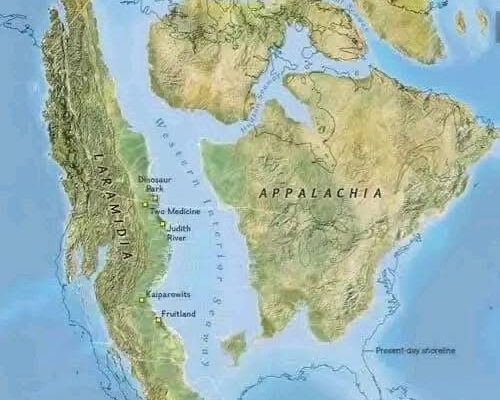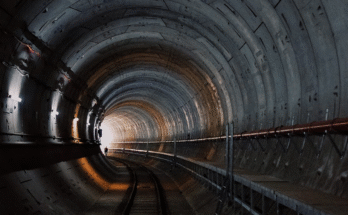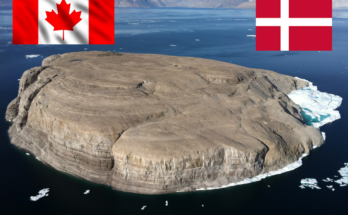During the Late Cretaceous period, around 77 million years ago, North America was an entirely different world. A massive inland sea known as the Western Interior Seaway divided the continent into two distinct landmasses: Laramidia to the west and Appalachia to the east. This seaway stretched from the Gulf of Mexico to the Arctic Ocean, creating a rich marine environment while isolating ecosystems on either side.
Laramidia, a narrow strip of land along the western coast, was a hotbed of dinosaur diversity. The region’s lush environments supported some of the most iconic prehistoric creatures known today. Among them were the fearsome Tyrannosaurus rex, the horned Triceratops, and the duck-billed hadrosaurs, which thrived in herds. The varied habitats of Laramidia, ranging from coastal plains to conifer forests, allowed these dinosaurs to flourish. Fossil evidence from the region reveals an incredible diversity of species, each uniquely adapted to its niche in the ecosystem.
On the eastern side of the seaway lay Appalachia, a landmass with its own distinctive flora and fauna. Separated from Laramidia, the dinosaurs of Appalachia evolved differently, creating a unique but less studied ecosystem. Dense forests, swamps, and a proliferation of flowering plants shaped the landscape, providing abundant food and shelter for its inhabitants. While Appalachia lacked the massive predators of Laramidia, smaller theropods and herbivores roamed the region, coexisting with a wide variety of amphibians, reptiles, and insects.
The Western Interior Seaway itself was a dynamic marine habitat teeming with life. Warm, shallow waters hosted enormous marine reptiles like mosasaurs, which were apex predators of the sea. Ammonites, now extinct relatives of modern squids and octopuses, drifted through these waters in large numbers, while fish and other marine organisms formed the foundation of the aquatic food web. The seaway’s coastlines were fringed with mangroves and wetlands, blending terrestrial and marine ecosystems and creating a haven for both aquatic and land-dwelling creatures.
The climate during this time was significantly warmer than today, with no polar ice caps and higher global sea levels. Tropical and subtropical conditions dominated, leading to lush, green landscapes that supported the abundant plant and animal life. This warm climate also contributed to the formation of the seaway, as melting ice and tectonic activity flooded low-lying areas of the continent.
The Late Cretaceous period was a time of remarkable biological diversity and environmental change. The separation of Laramidia and Appalachia by the Western Interior Seaway allowed for the independent evolution of species on either side, while the seaway itself fostered a thriving marine ecosystem. Together, these factors created a dynamic and interconnected prehistoric world, showcasing the resilience and adaptability of life on Earth millions of years ago.



